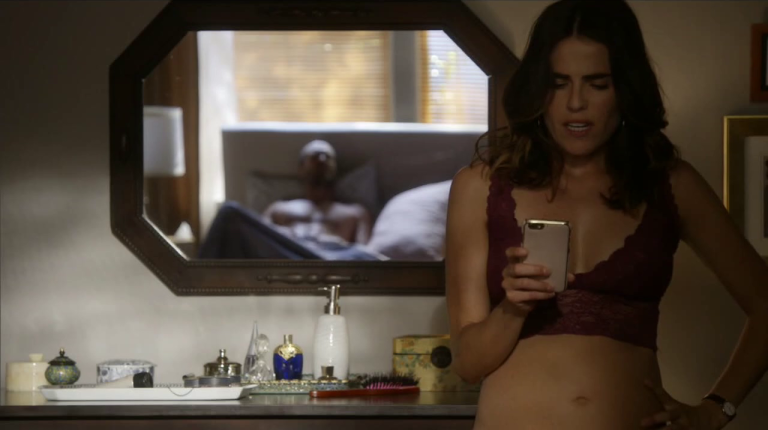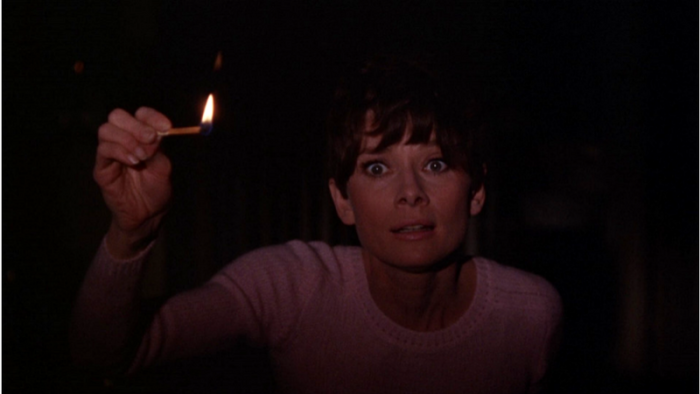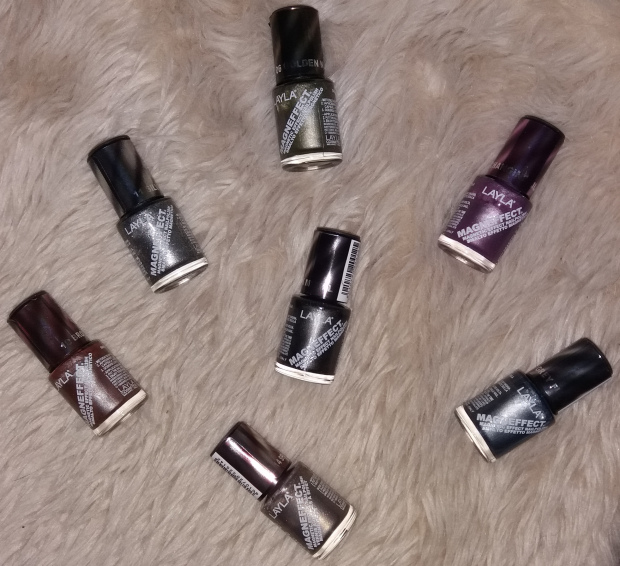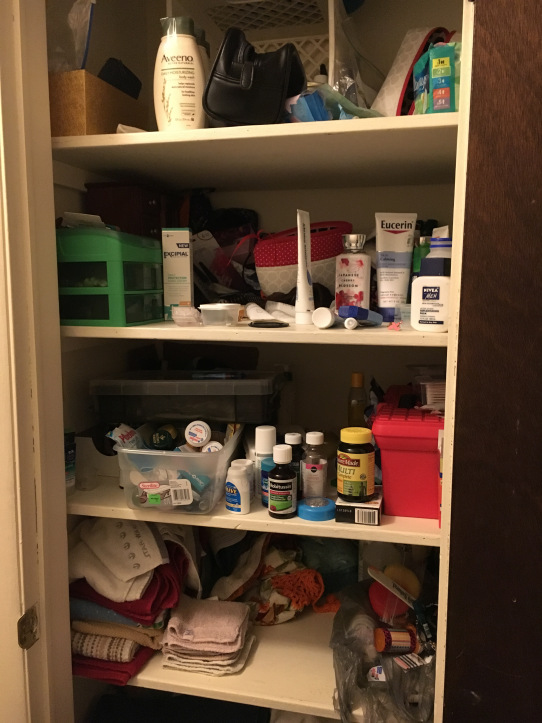
The false self is created by separating ‘yes’ from ‘no’, ‘plus’ from ‘minus’, ‘in’ from ‘out’. Contemporary rationally-orientated psychology sets itself up as a highly sophisticated and intellectual business – something that you have to be very clever to understand – but what’s so sophisticated about this? Other than how the self is created and maintained, what else do we need to know about it? And psychology is only ever about the mind-created self and its antics – what else would it care about?
Making this complicated is to obscure what is really going on, and what is really going on is that we are splitting the world into two halves, as we have just said. We are dividing everything into two, when it isn’t really two at all. We’re doing this simply by judging – as soon as we judge the world we create two possibilities, the right one and the wrong one. Another way of putting this is to say that we’re dividing the world in two by controlling – just as soon as we start controlling (or even thinking about controlling) we have split everything up into ‘the desirable outcome’ versus ‘the undesirable outcome’. Controlling only recognizes these two possibilities. So evaluating the world and controlling (or attempting to control) the world is how we create the self.
This is – if anything – too simple to understand: +/- equals the self. Suppose – just to give an example of how this works – I am looking forward to some great event (which is of course not an unusual state of affairs). In this case the polarity +/- exists between the event which is to happen (which is the desirable outcome) and ‘where I am right now’ (which by definition must be where we don’t want to be). We might not necessarily think of the present moment as being ‘undesirable’ but clearly it must be undesirable with regard to what we are expecting to happen next. If there wasn’t this bad/good (or worse/better) polarity then there could be no such thing as ‘anticipating a positive outcome’; if the moment to come is better than where we are shortly to be then staying where we are must be the undesirable outcome. This isn’t too hard or too radical a notion to understand of course but where we’re going with it is – where we’re going with this argument is to say that it is this positive / minus dissymmetry (caused by desire) that creates the self. In a nutshell, unless I can imagine (and believe) that there is both a situation in which I am better off, and a situation where I am worse off (i.e. unless there is winning and losing) there is going to be no experience of being ‘this self’.
Trying to obtain the agreeable situation (and at the same time avoid the disagreeable one) is the mechanism by which the self gets to exist. Or as we could also say, ‘trying’ is how the self gets to exist. Striving and struggling is how the self gets to exist. Relaxing – on the other hand – is not how the self gets to exist. Conflict is thus a necessary condition for being the self; aggression is necessary condition for being the self. If I am perfectly happy with where I am, and am not therefore experiencing any resistance to the present moment, then this perception of ‘being a self’ doesn’t happen. When there is no striving and straining the perception of being a self – which we place so much stock in – ceases. The end of the ongoing ‘drama’ equals the end of the self!
The implications of this are very interesting, to say the least. Straightaway we can see that the prospects of the self ever becoming genuinely peaceful or non-violent are non-existent – that’s just never going to happen. The self is never going to become non-violent because that’s a contradiction in terms! The self is a little ‘unit of controlling’ and if it ever gives up its ongoing scheming and manipulation of what is going on around it then it will dissolve. The self is a little struggler and the outcome of its struggling is itself! If the straining and struggling ceases then the purposeful self is going to dissolve into peacefulness; it’s going to vanish like a wrinkle in a tablecloth when the tablecloth is pulled taut – it’s no good asking “where is the wrinkle?” or searching under the table to see where it has gone. It’s no good searching for it because the wrinkle – as an independent entity – was never there in the first place…
The conditioned self is only there because of its controlling, just as the wrinkle in the tablecloth is only there because the tablecloth hasn’t been stretched out properly and turned back into the symmetrical situation that it always was. When there is a bit of slackness in the tablecloth then there is this apparent difference (or separation) between the crest of the wrinkle and the trough and this gives the superficial appearance of there being something there and in the same way the conditioned self always constructs itself on the basis of the apparent difference or separation between the desirable outcome and the undesirable one. And it’s not just a diffidence or a separation that we’re talking about here but the irresolvable conflict between two opposing poles. How can ‘win’ and ‘lose’ be reconciled? There is always going to be an opposition between where we are and where we want to be and it is this opposition (or ‘tension’) that creates (or defines) the self.
Suppose – by way of a little ‘thought experiment’ – that I am unconditionally happy to being where I actually am; suppose that I have zero resistance to my present situation. What happens then? The simple answer is that I cease to define myself; I cease to define myself because thought is no longer involved. Thought is only there when I am trying to change things, after all – it has nothing to add (or nothing to say) about things being the way that they actually are! Thought is the division between YES and NO, the division between IS and ISN’T. This is Aristotelian Logic – either the cat is on the mat or it the cat is NOT on the matter. It has to be either YES or NO because that’s how AL works and thought operates on this basis. Thought is Aristotelian Logic.
I can only ever define myself (or anything else) in terms of polarities (the polarity of IS/ISN’T, as we have just said) and so when there are no more polarities there can be no more definitions…
This – not as a theory but rather a matter of direct everyday observation – has been known for a long time. In the metaphysics of ancient India it is said that ananda (i.e. the state of complete bliss) follows just as soon as we no longer want things to be different from the way that they are. We can see this ourselves when we meditate – when all straining and striving ceases (however momentarily) then so too does the sense of being a separate, ‘constricted’ self. Instead of this painfully ‘pinched’ feeling of localization and limitation (which goes hand-in-hand with the feeling that all the good stuff exists outside of us) there is the perception of great tranquillity, depth and joy – a perception of tranquillity, depth and joy that the self – by its very nature – can never come across.
The self is built on the basis of positive statements. There is no basis for it, in other words. Every positive (or definite) statement is by its very nature aggressive. How could it be otherwise – how can we definitely assert something without being aggressive? Every positive statement is an exercise in violence and the reason for this is that no positive statement is ever true. We are asserting it alright but this doesn’t make it true – we’re just trying to say that it is, which is not the same thing at all. Positive assertions fly in the face of reality – we’re saying that something is true when it isn’t. Every positive statement is a polarity, even though it may not look like it. Every positive statement is an exercise of polarity because it is strung out – like a hammock – between two opposing poles – there is the pole of ‘IT IS’ and the pole of ‘IT ISN’T’ (as we have already said). We can also say that every positive statement is an implicit contradiction of the complementary antithetical statement, so if I say (to give the same example that we gave before) “The cat is on the mat” then this is the denial of the inverse statement, which is “The cat is NOT on the mat”, and so both ‘statement’ and ‘anti-statement’ are at all times inextricably conjoined. The polarity (or paradoxicality) of all definite statements is not apparent on the surface (clearly it isn’t, because it always comes as a surprise) because all the emphasis is on the ‘affirming’ side of things, but ‘affirming’ cannot exist without ‘denying’, just as UP cannot exist without DOWN! YES always says NO just as NO always says YES, and so just as all positive statements are secretly self-denying, so too is the self secretly self-denying in exactly the same way.
Just as long as we live superficially, skimming blithely along on the surface of things, we will never see the self-contradicting nature of our own statements, the paradoxicality of our stances or opinions in life. If on the other hand we start to get philosophical about things (i.e. if we start to actually look into ourselves and our relationship with the world we live in) then it’s all going to unravel in the most dramatic fashion. When we start to become aware of the buried (or ignored) paradoxicality of our lives then these previously invisible paradoxes will turn around and bite us most viciously. If it is agonizingly frustrating not to get the outcome that we so desperately want, then how much more painful must it be to see that our desire to benefit ourselves is the very same thing as our (secret) desire to harm ourselves, that what we so fervently claim to believe is actually something that we doubt very much, something that suspect we very much to be entirely untrue? How difficult it must be to learn this…
What we prize the most (i.e. the goal, the desired outcome) hurts us the most. Why is this? Simply because the desired outcome and the feared outcome are one and the same thing. What brings us pleasure is what brings us pain. Pleasure is pain. The more we grasp after the outcome we crave the more terrible is the pain that is visited upon us as a result – the more we grasp (or run away) the more we create the greedy, fearful self in other words, and there is no way that this is going to work out for us. There is nothing as tortuous as ‘unveiled neuroticism’, neuroticism when it shows its true colours. Veiled neuroticism is on the other hand quite painless; veiled neuroticism is another way of talking about normal everyday life, which is where we work away like busy beavers trying to separate the opposites, trying to separate the outcomes we want from the ones we don’t want. We have totally identified with the thinking (or discriminatory) mind and so to become aware of this mind’s inherently self-contradictory nature cannot be anything else other than profoundly and unrelentingly painful. This is ‘the pain of waking up’. The mechanism we have relied upon so absolutely for the whole of our lives has failed us – and not only has it failed us, it has turned against us in the most terrible way. This is like a nightmare only it isn’t – it’s quite real and that’s why it won’t go away. What we previously knew before wasn’t reality at all – that was just a fantasy….
The thinking or discriminatory mind produces pleasure, and it also produces pain in equal measure. The pleasure melts away into pain even as we try to grasp hold of it and make it last. Then, when we have suffered the bitterness of the pain that we have incurred – as we cannot avoid doing – we reach out for the desired outcome (and the euphoria it brings) all over again. This is the Wheel we are forever holding onto, the Wheel whose spokes of agony we are forever hugging and kissing, as Sir Edwin Arnold says in his celebrated poem, The Light Of Asia. To be aware of how the mind can only ever do this is the hardest of all things, and yet from this pain and confusion arises wisdom, and wisdom means that we eventually desist from creating the false self. We lose interest in the tedious business of creating that self – there are more interesting things to do, after all!
Art: Virgil Wong, Alchemy, digital composite printed on metal
Advertisements Share this:






